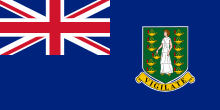BRITISH VIRGIN ISLANDS
 This archipelago which is composed of over 40 volcanic islands and cays, is British property. Its area is 153 sq km. The main islands are Tortola, Jost Van Dyke, Virgin Gorda and Anegada. They have three gographical zones : coastal plains and beaches ; coastal dry forests ; steep central mountains. There is no river in the British Virgin Islands.
This archipelago which is composed of over 40 volcanic islands and cays, is British property. Its area is 153 sq km. The main islands are Tortola, Jost Van Dyke, Virgin Gorda and Anegada. They have three gographical zones : coastal plains and beaches ; coastal dry forests ; steep central mountains. There is no river in the British Virgin Islands.
Tortola (with its 54 sq km) is located in 3km from St John (US Virgin Islands). The archipelago’s capital – Road Town – is settled there. Sage Mountain (542 m) is the highest point. Almost 80% of the inhabitants live and work in Tortola.
Jost Van Dyke is situated at 8 km north-west of Tortola. Its area is 10 sq km.
Virgin Gorda, situated at 13km east of Tortola, is dominated in the north by Virgin Gorda Peak (414m). In the south, there is a plain.
Anegada, the eastermost Virgin Islands, is located in 32km from the island-capital Tortola and 19km from Virgin Gorda. Anegada is the only island that does not have a mountainous topography : it is a 100 sq km flat coral island. Because of its dangerous reefs, hundreds of wrecks (about 300) are lying at the bottom of the sea.
Hundreds of plant varieties grow in British Virgin Islands. Tall trees as mahogany, bamboos, creepers, ferns, over 30 species of orchid, occupy the mountains. Coconut trees, manchineels, bougainvilleas or mangrove are in the coast.
Many animals has been brought in the BVI. Among them, dogs, cats, pigs, goats, donkeys, wild horses. There are also reptiles as no poisonous snakes, lizards, iguanas, anolies, geckos. Many frogs and toads hide there. 200 species of bird nest in the archipelago.
To protect the environment, mainly after the destruction of the mangrove, fifteen national parks have been created in the archipelago.
During the colonization, sugar cane plantations, tabacco and cotton represented the economic activities. Today, tourism is the main economy.
Santa Ursula y las Once Mil Virgenes, it is by this name Christopher Columbus christened this archipelago, in 1493. These Spanish possessions were very coveted by France, England, Holland and even Denmark. They became dens for pirates like Francis Drake. In the 18th century, the Danes settled in the western and the English, in the eastern. Great Britain brought thousands of African slaves to cultivate the fields. After several revolts, slavery was abolished, in 1834.
In 1967, the British Virgin Islands got more autonomy. The same year, Elizabeth II Queen of Great Britain visited the archipelago.
The British Virgin Islands have their own political parties and a Prime Minister. The archipelago belongs to the Commonwealth.
Area : 153 sq km (59 sq miles)
Population : 28 000 inhabitants
Capital : Road Town (Tortola Island)
Language : English
Currency : US Dollar (US$)
People : British Virgin Islanders
